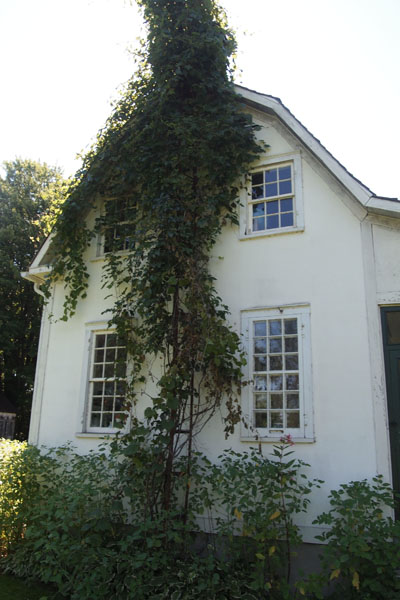Bethune-Thompson House / White House National Historic Site of Canada
Williamstown, Ontario

Main house: partial north elevation
© © ERA Architects / Courtesy of Emma Greer
Address :
19730 John Street, Williamstown, Ontario
Recognition Statute:
Historic Sites and Monuments Act (R.S.C., 1985, c. H-4)
Designation Date:
1966-10-26
Dates:
-
1784 to 1804
(Construction)
Event, Person, Organization:
-
Reverend John Bethune, Upper Canada's first Presbyterian minister
(Person)
-
David Thompson
(Person)
Other Name(s):
-
Bethune-Thompson House / White House
(Designation Name)
Plaque(s)
Existing plaque: north west of house on east side of driveway 19730 John Street, Williamstown, Ontario
Historic construction techniques and classic design are combined in this early Ontario home. The vertical log south wing may date from the 1780s when Loyalist Peter Ferguson settled on the site. The central part was built ca. 1805 as a manse for Rev. John Bethune, the first Presbyterian Minister of Upper Canada and was later the residence of explorer David Thompson. Beneath the stucco of the main block, the timber frame has three walls infilled with rubble stone and a fourth with "stick and mud". The five-bay facade, formerly flanked by similar wings, expresses the British classical tradition.
Description of Historic Place
Highly evocative of time and place, the Bethune-Thompson / White House features the poteaux-sur-sol construction and verandah typical of Quebec architecture, combined with the symmetry and classical details typical of late 18th and early 19th century British architectural influences. Both exterior and interior are in a remarkable state of preservation and are included in the designation.
Heritage Value
Bethune-Thompson House / White House was designated a national historic site of Canada because: this early Ontario home combines historic construction techniques and classic design; and the central part was built ca. 1805 as a manse for Rev. John Bethune, the first Presbyterian Minister of Upper Canada and was later the residence of explorer David Thompson.
Historic construction techniques and classical design are combined in this early Ontario home. The vertical log south wing may date from the 1780s when Loyalist Peter Ferguson settled on the site. The central part was built ca. 1805 as a manse for Rev. John Bethune, the first Presbyterian Minister of Upper Canada and was later the residence of explorer David Thompson. Beneath the stucco of the main block, the timber frame has three walls infilled with rubble stone and a fourth with ‘stick and mud’. The five-bay facade, formerly flanked by similar wings, expresses the British classical tradition.
Source: Historic Sites and Monuments Board of Canada, Minutes, November 1984.
Character-Defining Elements
Aspects of this national historic site which contribute to its heritage character include: those elements which speak to its historic construction techniques, specifically the timber frame with rubble and mud infill construction, wooden cladding and plaster finish; those elements which speak to the classical design, namely the rectangular massing and composition based upon contemporary classical traditions with a symmetrically organized five-bay facade with central entry flanked by multi-pane sash windows, and classical detailing of doors and windows, stair railings, mouldings, and fireplace surrounds; the high level of craftsmanship evident in the very fine wood detailing; evidence of the house’s organic, iterative evolution over time, such as the organic floor plan, the off-set chimney, the central gable over a sloped porch roof, and examples of changed usage patterns such as covered-over windows; the semi-rural setting on a large grassed lot.